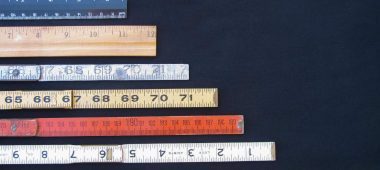Seemingly, every hour brings more news of death, pain, anxiety and fear as the world navigates a global pandemic. Like you, we have been closely following the news about federal and state relief efforts for our severely battered small businesses, including new low-interest loans offered through the U.S. Small Business Administration and the U.S. Treasury.
The need is massive: Half of America’s small businesses hold cash reserves of 15 days or less, according to a recent study by JPMorgan Chase Institute looking at the US’s 25 largest metro areas. The situation in the Miami metro area is even more dire: the median small business has just 11.8 buffer days. Even businesses with 3- to 6-month cushions don’t know how long this coronavirus pandemic will last or how deep and prolonged the COVID-19 recession will go.
What we do know for sure is that small businesses are hardest hit in recessions because of credit restraints and sensitivity to weak consumer demand. Brookings looked back on what happened to small businesses during the last major economic downtown, 2007 to 2009. In the Great Recession, small businesses accounted for 45% of employment, but as the economy shed about 5 million jobs from 2008 to 2009, they accounted for 62% of the net job loss, Brookings found. The early stages of the COVID-19 economic crisis suggest that job losses will fall even more disproportionately within the small business sector.
To survive, small businesses need cash now, and the federal government has stepped up to help with two loans: The Economic Injury Disaster Loans and the newest offering, the Paycheck Protection Program (PPP) loans, which are forgivable. While small businesses can technically apply for both types of loans to cover different expenses, how this functionally will work is unclear.
To be sure, SBA loans are not known for ease of application or swift approvals, but government officials are trying to assure small businesses that processes have been streamlined and approvals will come faster (the SBA website, however, has been overwhelmed by the number of disaster loan applications). In the meantime, the federal government as well as some states, including Florida, offer emergency bridge loans and grants designed to help small businesses until SBA or other assistance becomes available.
We’ve helped some small businesses navigate the loan process, and we’d like to share what we’ve learned. One important caveat: Rules and guidelines are constantly updating. For instance, several requirements for the disaster loans changed (for the better) after the signing of the $2.2 trillion stimulus package known as the CARES Act on March 27. Also, the SBA has not yet issued final guidelines for the PPP loans that are part of the CARES Act.
PAYCHECK PROTECTION PROGRAM LOANS
The Paycheck Protection Program is extremely favorable because it functionally acts as a grant if business owners comply with the specific requirements. It funds small-business loans through local lenders, relying on its network of thousands of SBA 7(a) lenders. Lenders can only start lending once the SBA releases its regulations, which we anticipate soon.
Use of funds: The loans are available to companies with less than 500 employees, as well as 501(c)(3) nonprofits, sole-proprietors and independent contractors. The loans are designed to be used to cover monthly expenses like payroll, employee benefits, rent and utilities to keep workers employed.
Forgiveness: The portions of the loans spent during the first eight weeks on operating expenses will be forgiven if businesses maintain their workforce. If the business have already laid off employees because of the coronavirus, the portion of the loan will still be forgiven if workers are rehired. The US Chamber of Commerce offers a step-by-step calculation. You will need to submit specific documentation to your lender in order to be eligible.
Terms: Loan balances that have not been forgiven are carried forward as an ongoing loan at an interest rate of 0.5% for 2 years. The loan size, up to $10 million, is determined by formulas based 250% of your average 2019 monthly payroll.
Other details: Principal and interest will be deferred for a total of 6 months after disbursement of the loan. The PPP Program waives both borrower and lender fees, scraps the “credit elsewhere test” for loans made under the program, and waives collateral and personal guarantee requirements.
Where to apply: Any financial institution that offers SBA 7(a) loans, including most commercial banks.
Download a Q&A about the PPP loan program, the EIDL and other federal assistance for small businesses here. More information is also available at www.sba.gov/coronavirus.
ECONOMIC INJURY DISASTER LOANS
The Small Business Administration’s Economic Injury Disaster Loans (EIDLs) have always been available after disasters such as hurricanes, but this is the first time for a pandemic. They are processed by the SBA and disbursed directly by the government. Businesses that apply for EIDLs can also apply for a $10,000 emergency advance that does not have to be paid back.
The details:
Use of funds: Business with 500 or fewer employees, including independent contractors, sole proprietors and certain nonprofits, in operation by Jan. 31, 2020 can apply. Funds must be used to pay operating expenses that could have been met had the pandemic not happened, including payroll.
Rates and Terms: Loans can be up to $2 million for a term up to 30 years. Interest Rates are 3.75% for small business and (2.75% for non-profits). There are no loan fees, guarantee fees or prepayment fees.
Process streamlined: Loans can be approved by the SBA based solely on the applicant’s credit score; no tax returns required. Loans under $200,000 can be approved without a personal guarantee.
Other details: For those concerned about taking on debt or putting up collateral, businesses can apply, and if approved, can decline the loan without penalty.
Where to apply: www.SBA.gov/disaster or directly here.











